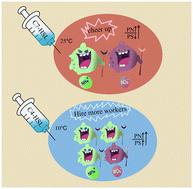当前位置:
X-MOL 学术
›
Environ. Sci.: Water Res. Technol.
›
论文详情
Our official English website, www.x-mol.net, welcomes your
feedback! (Note: you will need to create a separate account there.)
Effects of different N-acyl homoserine lactones on the performance of high ammonia nitrogen wastewater treatment: a bioaugmentation strategy at room and low temperature
Environmental Science: Water Research & Technology ( IF 3.5 ) Pub Date : 2022-09-15 , DOI: 10.1039/d2ew00419d Huizhi Hu 1 , Feng Luo 2 , Yirong Liu 2
Environmental Science: Water Research & Technology ( IF 3.5 ) Pub Date : 2022-09-15 , DOI: 10.1039/d2ew00419d Huizhi Hu 1 , Feng Luo 2 , Yirong Liu 2
Affiliation

|
Due to the high environmental sensitivity of nitrifying bacteria, the biological nitrogen removal process is facing the challenge of poor stability and treatment performance, especially at low temperature. Adding exogenous N-acyl homoserine lactones (AHLs) is a potential bioaugmentation method. In order to evaluate the roles of different AHLs, the effects of 2 μM exogenous five AHLs on the distribution of AHLs, reactor performance, extracellular polymeric substance (EPS) characteristics and microbial community structure in lab-scale SBRs treating high ammonia nitrogen wastewater were systematically studied at 25 °C and 10 °C. The results showed that the effects of the five AHLs were significantly different, and the same AHLs behaved quite differently at the two temperatures. The residual amount of exogenous AHLs at room temperature was lower than that at low temperature, while the reverse was true for endogenous AHLs. At 25 °C, the best-performing N-heptanoyl-L-homoserine lactone (C7-HSL) significantly promoted the growth and activity of microorganisms, enhanced protein synthesis and the formation of tryptophan amino acids, and inhibited polysaccharide production, thereby effectively controlling nitrite nitrogen accumulation. However, N-butyryl-DL-homoserine lactone (C4-HSL) outcompeted it at 10 °C, which enhanced the nitrogen removal by simultaneously accelerating the formation of proteins and polysaccharides, increasing the abundance of nitrifying bacteria and promoting the growth of microorganisms. Consequently, this study may offer a feasible approach to enhance the performance of treating high ammonia nitrogen wastewater through selecting appropriate AHLs.
中文翻译:

不同N-酰基高丝氨酸内酯对高氨氮废水处理性能的影响:室温和低温下的生物强化策略
由于硝化菌对环境的高度敏感性,生物脱氮工艺面临着稳定性和处理性能较差的挑战,尤其是在低温条件下。添加外源N-酰基高丝氨酸内酯(AHLs)是一种潜在的生物强化方法。为了评估不同AHLs的作用,系统地研究了2 μM外源五种AHLs对实验室规模SBRs处理高氨氮废水中AHLs分布、反应器性能、细胞外聚合物(EPS)特征和微生物群落结构的影响。在 25 °C 和 10 °C 下研究。结果表明,五种 AHLs 的效果存在显着差异,相同的 AHLs 在两种温度下的表现也大不相同。室温下外源性AHLs的残留量低于低温下,而内源性AHLs则相反。在 25 °C 时,性能最佳的N-庚酰基-L-高丝氨酸内酯(C7-HSL)显着促进微生物的生长和活性,增强蛋白质合成和色氨酸氨基酸的形成,抑制多糖的产生,从而有效控制亚硝酸盐氮的积累。然而,N-丁酰-DL-高丝氨酸内酯 (C4-HSL) 在 10 °C 时胜过它,它通过同时加速蛋白质和多糖的形成、增加硝化细菌的丰度和促进微生物的生长来增强脱氮。因此,本研究可能提供一种可行的方法,通过选择合适的 AHLs 来提高处理高氨氮废水的性能。
更新日期:2022-09-15
中文翻译:

不同N-酰基高丝氨酸内酯对高氨氮废水处理性能的影响:室温和低温下的生物强化策略
由于硝化菌对环境的高度敏感性,生物脱氮工艺面临着稳定性和处理性能较差的挑战,尤其是在低温条件下。添加外源N-酰基高丝氨酸内酯(AHLs)是一种潜在的生物强化方法。为了评估不同AHLs的作用,系统地研究了2 μM外源五种AHLs对实验室规模SBRs处理高氨氮废水中AHLs分布、反应器性能、细胞外聚合物(EPS)特征和微生物群落结构的影响。在 25 °C 和 10 °C 下研究。结果表明,五种 AHLs 的效果存在显着差异,相同的 AHLs 在两种温度下的表现也大不相同。室温下外源性AHLs的残留量低于低温下,而内源性AHLs则相反。在 25 °C 时,性能最佳的N-庚酰基-L-高丝氨酸内酯(C7-HSL)显着促进微生物的生长和活性,增强蛋白质合成和色氨酸氨基酸的形成,抑制多糖的产生,从而有效控制亚硝酸盐氮的积累。然而,N-丁酰-DL-高丝氨酸内酯 (C4-HSL) 在 10 °C 时胜过它,它通过同时加速蛋白质和多糖的形成、增加硝化细菌的丰度和促进微生物的生长来增强脱氮。因此,本研究可能提供一种可行的方法,通过选择合适的 AHLs 来提高处理高氨氮废水的性能。






























 京公网安备 11010802027423号
京公网安备 11010802027423号